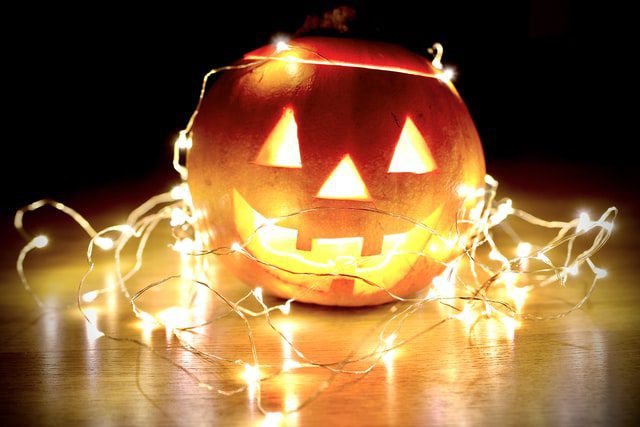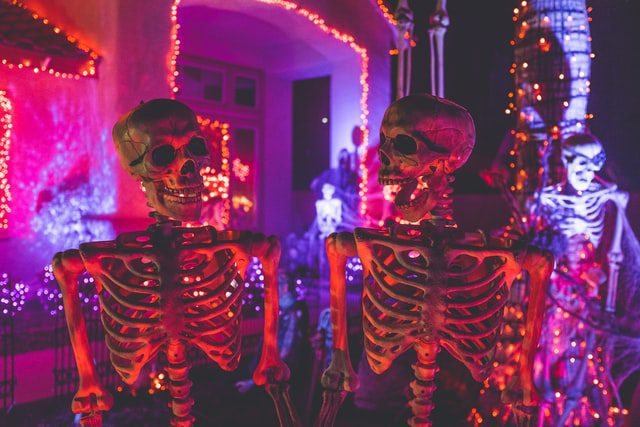9 fun facts about your favourite festival Halloween! Did you know them? Read to find out


It’s here! The most awaited and loved Holiday is just two days away! Did you guys buy the perfect costume? Or the candies? Have you carved the scary pumpkins? Even though this year has been difficult but we’re sure that Halloween is still gonna be amazing. Perhaps we don’t really feel it now but on the eve of October 31 you won’t be able to control yourself. Those beautiful but scary decorations that makes every house in the colony look like a haunted place, those zombies moving around wearing costumes, those cuties asking for their favourite candies and then the whole celebratory dinner, everything’s gonna blow you up. So among all these exciting squeals and frightening costumes, did you ever stop and think about the reason you’re doing this for? Perhaps the history of Halloween and it’s costumes? Scroll down to read some fascinating facts about our favourite festival.
- On May 13, 609 A.D., Pope Boniface IV dedicated the Pantheon in Rome in honour of all Christian martyrs, and the Catholic feast of All Martyrs Day was established in the Western church. Pope Gregory III later expanded the festival to include all saints as well as all martyrs and moved the observance from May 13 to November 1. All Souls’ Day was celebrated similarly to Samhain, with big bonfires, parades and dressing up in costumes as saints, angels and devils. The All Saints’ Day celebration was also called All-hallows or All-hallowmas (meaning All Saints’ Day) and the night before it, the traditional night of Samhain in the Celtic religion, began to be called All-Hallows Eve and, eventually, Halloween.
- Halloween costumes are costumes worn on or around Halloween, a festival which falls on October 31. The wearing of costumes at Halloween may come from the belief that supernatural beings, or the souls of the dead, roamed the earth at this time.

- It has been said that the custom comes from the Celtic festivals of Samhain and Calan Gaeaf. The practise may have originated in a Celtic festival, held on 31 October–1 November, to mark the beginning of winter. It was called Samhain in Ireland, Scotland and the Isle of Man, and Calan Gaeaf in Wales, Cornwall and Brittany. It was believed that the line between the world of the dead and the human world is the thinnest at this time due to which the spirits of the dead can communicate with humans and enter our world. We disguise ourselves to get their blessings for good fortune and for safety. Originally, only the saints used to wear frightening costumes made with pure animal skin and would sacrifice animals by throwing them into the fire as an offering to the dead. However, this was not totally confirmed and some contradictory theories were made regarding these facts. By doing this, it was believed that the ghostly spirits would not only protect people from themselves and others but also bless them for a good future and will even tell them something about their futuristic events. It was believed that the spirits needed to be propitiated to ensure that the people and their livestock survived the winter.
- Halloween costumes are traditionally based on frightening supernatural or folkloric beings. However, by the 1930s costumes based on characters in mass media such as film, literature, and radio were popular.

- From at least the 16th century, the festival included mumming and guiding, which involved people going house-to-house in costume (or in disguise), usually reciting verses or songs in exchange for food.[6] It may have originally been a tradition whereby people impersonated the spirits or the souls of the dead and received offerings on their behalf. Impersonating these beings, or wearing a disguise, was also believed to protect oneself from them.
- Christian minister Prince Sorie Conteh wrote on the wearing of costumes: “It was traditionally believed that the souls of the departed wandered the earth until All Saints’ Day, and All Hallows’ Eve provided one last chance for the dead to gain vengeance on their enemies before moving to the next world. In order to avoid being recognised by any soul that might be seeking such vengeance, people would don masks or costumes to disguise their identities”.
- Costumes are traditionally those of monsters such as vampires, werewolves, zombies, ghosts, skeletons, witches, devils, or in more recent years such science fiction-inspired characters as aliens and superheroes. There are also costumes of pop culture figures like presidents, athletes, celebrities, or characters in film, television, literature, etc. Another popular trend is for women (and in some cases, men) to use Halloween as an excuse to wear sexy or revealing costumes, showing off more skin than would be socially acceptable otherwise. Young girls also often dress as entirely non-scary characters at Halloween, including princesses, fairies, angels, cute animals and flowers.
- Borrowing from European traditions, Americans began to dress up in costumes and go house to house asking for food or money, a practice that eventually became today’s “trick-or-treat” tradition. Young women believed that on Halloween they could divine the name or appearance of their future husband by doing tricks with yarn, apple parings or mirrors.
- A jack-o’-lantern is a carved pumpkin, turnip, or other root vegetable lantern associated with Halloween. In a jack-o’-lantern, the top of the pumpkin or turnip is cut off to form a lid, the inside flesh is scooped out, and an image—usually a scary or funny face—is carved out of the rind to expose the hollow interior. To create the lantern effect, a light source, traditionally a flame such as a candle or tea light, is placed within before the lid is closed. The name is tied to the Irish legend of Stingy Jack, a drunkard who bargains with Satan and is doomed to roam the Earth with only a hollowed turnip to light his way.
So, did you guys find something new and interesting? I really hope that you do. The tough times will pass soon and as believed anciently, let’s pray to the souls of the dead to get a good fortune ahead. Wish you all a Happy Halloween !
Featured image: Lukasz Niescioruk/Unsplash
